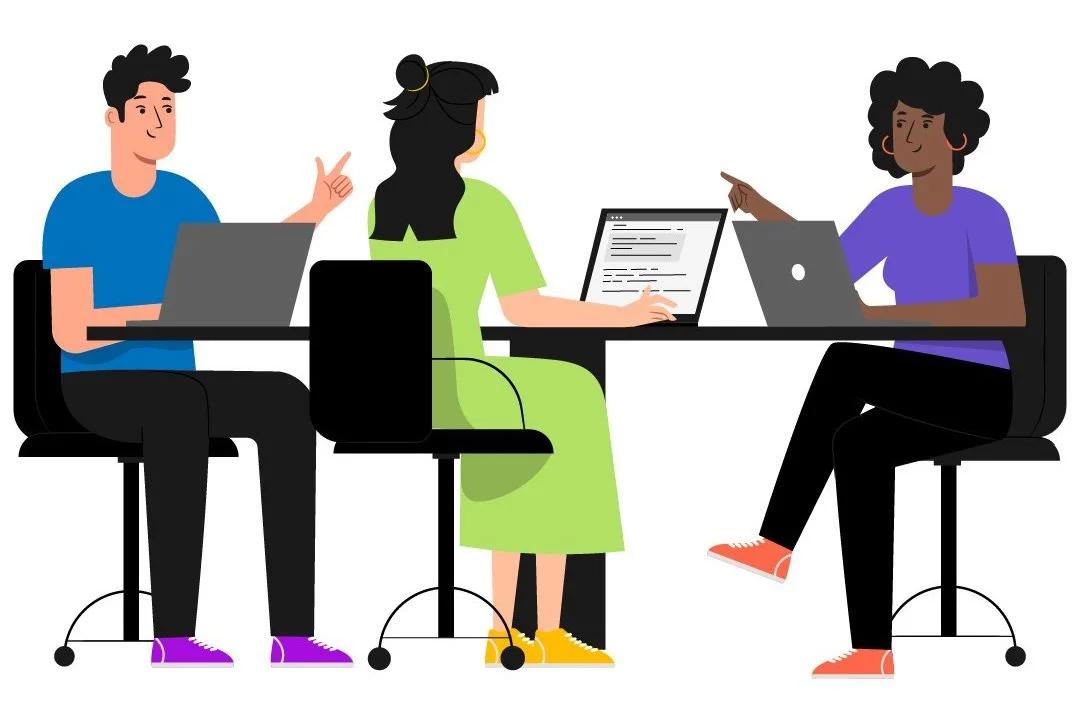The Teamwork Argument
By LIVIU FLOREA | Professor of Management | Washburn University School of Business
In many organizations, people work in teams for a significant part of their worktime. A team consists of two or more people who work interdependently to accomplish common goals related to a task-oriented purpose. Some teamwork is by default, in the sense that it is mandated, such as production and maintenance teams focused on the accomplishment of core operational-level production and service tasks.
Other teamwork occurs, however, by choice, meaning that team members don’t have to, but choose to work together. For instance, a group of executives may work together to identify solutions to organizational challenges.
TEAM PERFORMANCE & SATISFACTION
Since people choose, at times, teamwork, rather than individual work, it means that there are convincible arguments in support of teamwork. These arguments can, mostly, be subsumed into two categories: team performance and satisfaction with teamwork.
This means that team members hope to achieve more while working in teams than they can achieve individually or enjoy the teamwork experience. The performance argument is supported by the emergence of effective and creative solutions that happen when people with varied outlooks and experiences work together.
Teamwork is potentially synergistic, in that the team performance is higher than simply the sum of individual performances of the team members. The social orientation that most people share is likely endorsing the satisfaction argument. Despite the fact that some people prefer to work alone, most people enjoy sharing experiences with others. Sharing accomplishments enhances motivation and, even, sharing the lack of accomplishment may seed the ground for future accomplishments.
Furthermore, as part of a team, people have a greater level of control over decisions and work outcomes that can add to the feeling of belonging and lead to a greater feeling of ownership. When people are a part of a communal goal, they feel more connected to their organization and more fulfilled of their work.
In addition to performance and satisfaction, there are more arguments in support of teamwork, including individual and professional development through strengthening interpersonal relationships and team-mediated cross-learning opportunities. In teams, people observe and learn from each other, share, verify and validate viewpoints, and can, potentially, gain trust and confidence. Collective intelligence, described as shared or team intelligence that emerges from the collective efforts, collaboration, and competition can also be attributed, at least in part, to teamwork.
PERILS OF TEAMWORK
However, teamwork has its perils. To derive the team benefits, trust has to be built, procrastination and social loafing need to be identified and addressed, and destructive conflict needs to be averted, just like fear of conflict and artificial harmony should be prevented. In his book, “The Five Dysfunctions of a Team: A Leadership Fable,” Patrick Lencioni identifies other team perils, in addition to trust and conflict hindrances; vagueness and lack of commitment, in theform of feigning buy-in for team decisions that creates ambiguity throughout the organization; accountability avoidance that creates resentment, encourages mediocrity, and risks missing deadlines; and lack of attention to team results due to prioritizing personal success, status and ego before team success.
Teams are also vulnerable to incomplete or asymmetrically distributed information and “us versus them” thinking that dismisses or antagonizes non-members of the team and other teams, referred to as out-groups. Ineffective teams may lack clear goals, direction or priorities, as well as clear roles among team members and adequate work norms. These teams may suffer from disengagement, poor leadership, and lack of cooperation that can translate into a silo mentality, in which team members act in an isolated and un-coordinated manner.
Groupthink and group shift can also affect teamwork. In the latter, the initial positions of the team members are exaggerated toward a more extreme position, as a result of diffused responsibility, lower perceived accountability and higher team risk propensity, since the risk is divided among all team members rather than borne by an individual.
In the former, the desire for team harmony and conformity of viewpoints results in the team’s dysfunctional dynamics, focused on in-group or itself only; confirmation bias; dismissal of deliberate team decision-making or alternative solutions; and ‘dehumanization’ of actions of out-groups or members of other teams.
Team members can feel under pressure to avoid raising controversial issues out of fear that their views would be perceived negatively by other team members and in order to achieve or preserve clear and harmonious agreements, at the expense of innovation, constructive opinions and better arguments.
William H. Whyte Jr. derived the term from George Orwell’s 1984novel and wrote that “The main principle of groupthink, which I offer in the spirit of Parkinson’s Law, is this: The more amiability and ‘esprit de corps’ there is among the members of a policy-making in-group, the greater the danger that independent critical thinking will be replaced by groupthink, which is likely to result in irrational and dehumanizing actions directed against out-groups.” Irving Jones outlines 8 groupthink symptoms grouped in 3 categories:
SYMPTOMS OF GROUPTHINK
1. IN-GROUP OVERESTIMATION:
Illusion of invulnerability manifested in the form of an exacerbated confidence that the right decision has been made, facilitating excessive optimism and risk-taking.
Unquestioned belief in the morality of the team causing team members to ignore the consequences of their actions.
2. CLOSED-MINDEDNESS:
Rationalizing warnings that might challenge the team’s assumptions.
Stereotyping those who are opposed to the group as weak, evil, biased, spiteful, impotent or stupid.
3. PRESSURES TOWARD UNIFORMITY:
Self-censorship of ideas that deviate from the apparent team consensus.
Illusion of unanimity among team members, where silence is viewed as agreement.
Direct pressure to conform placed on any member who questions the team.
Mind guards, who are self-appointed members who shield the group from dissenting information.
Teamwork requires the right set of conditions—logistic, compatibility, commitment—to be effective. J. Richard Hackman identified four enabling conditions for team effectiveness:
WHAT AN EFFECTIVE TEAM NEEDS
1. COMPELLING DIRECTION THAT INSPIRES AND MOTIVATES TEAM MEMBERS
Effective teams need explicit goals that are consequential for team members and challenging, but not so difficult that the team becomes dispirited.
2. STRONG STRUCTURE AND THE RIGHT COMPOSITION
Teams require the right team composition and optimally designed tasks and processes that promote positive dynamics, cooperation, focus, clarity of tasks and goals, responsibility and accountability. Meanwhile, these tasks and processes should discourage counterproductive team behaviors, in the form of withholding information that undermines collaborative efforts, casting blame, procrastinating, social loafing, destructive conflict and distrust, selfishness, groupthink, or group shift. Teams can reduce the potential for counterproductive behaviors by establishing clear norms or rules that spell out desirable and undesirable team behaviors.
3. SUPPORTIVE AND PERFORMANCE-ENABLING CONTEXT
A performance-enabling supportive context includes an information system that provides real-time access to all relevant data, an educational system that increases awareness and develops capabilities, a reward system that reinforces good performance, and access to tangible resources, such as technology and equipment.
4. TEAM MENTAL MODEL AND SHARED MINDSET
Last but not the least important, each effective team builds its team mental model and shared mindset that are fostered by a common identity and common understanding. Team mental model that is reflected in the form of team cohesiveness and task abilities promotes knowledge-sharing, trust-building, performance orientation and epistemic opportunities, underlined by knowledge heterogeneity and within-team cross-learning potential.
Effective teamwork can also benefit from a practice called “structured unstructured time,” that is time blocked off in the schedule to talk about matters not directly related to the task at hand, to help team members become more familiar with each other, teamwork and context.Teamwork has never been just a “walk in the park,” but, if approached in a right manner, can provide a wealth of opportunities to everyone involved—team members, teams, organizations, and the society, as a whole.
TK








